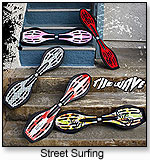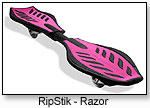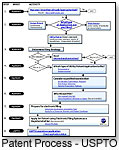
March 28, 2025


| “In late 1998, Toy Biz used all of its assets, including its portfolio of design patents and utility patents … to purchase Marvel.” |
 Patent rights confer a limited monopoly. They afford the patent holder the exclusive right to make, use, sell, or offer for sale any patented toy for a period of 20 years from the earliest filing date.
Patent rights confer a limited monopoly. They afford the patent holder the exclusive right to make, use, sell, or offer for sale any patented toy for a period of 20 years from the earliest filing date. Korean sports leisure company Slovie licensed its “essboard” patent to manufacturers of both the Wave (Street Surfing) and the Ripstik (Razor). The latter has become a household name, while the former exists in relative obscurity.
Korean sports leisure company Slovie licensed its “essboard” patent to manufacturers of both the Wave (Street Surfing) and the Ripstik (Razor). The latter has become a household name, while the former exists in relative obscurity. Ideally, at the end of the 12 months, the toy maker will have a better idea of the likelihood of success of the toy. If the non-provisional patent is not pursued, the toy maker must cease using the “patent pending” mark on any of the toys corresponding to an abandoned provisional patent. Continued use of such a mark when there is no application pending can result in legal action and financial penalty.
Ideally, at the end of the 12 months, the toy maker will have a better idea of the likelihood of success of the toy. If the non-provisional patent is not pursued, the toy maker must cease using the “patent pending” mark on any of the toys corresponding to an abandoned provisional patent. Continued use of such a mark when there is no application pending can result in legal action and financial penalty.
Copyright © 2025 TDmonthly®, a division of TOYDIRECTORY.com®,
Inc.